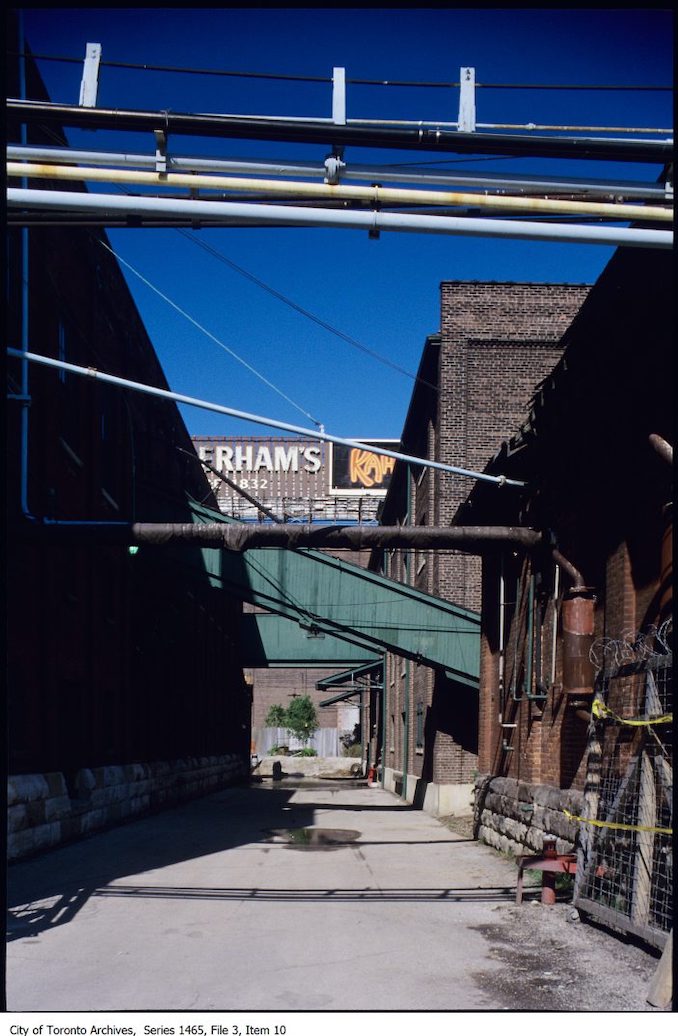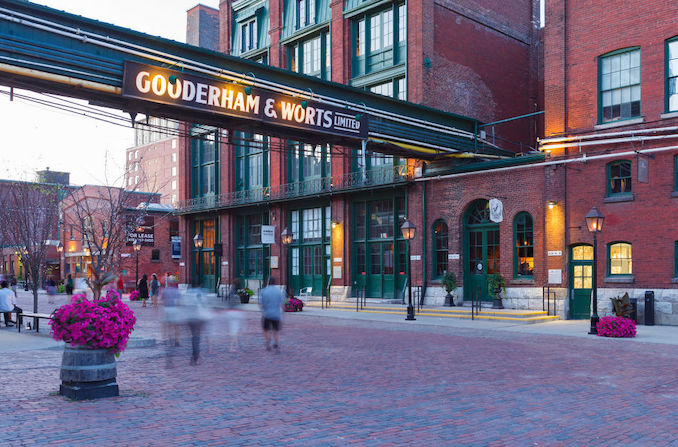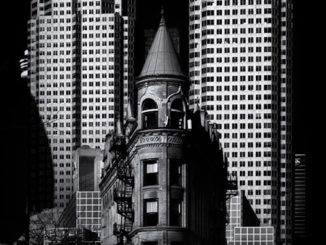Today, the Distillery District is a historic escape that provides a unique experience for locals, close to a journey back in time. What makes the district distinctive is its Victorian architecture, right in the heart of Toronto. The village is also considered a Canadian National Historic Site. You are surrounded by the nostalgic atmosphere of Victorian Industrial Architecture and cobblestone walkways as you walk through the Distillery District. Specialty boutiques, rustic coffee shops, restaurants, and more are studded along the pathways. However, the village was not always the historic landmark it is today. Throughout the past almost 200 years, the Gooderham and Worts distillery has undergone rich transformational change, and has remained staunch to Toronto through all its stages of sprouting into a metropolitan centre.
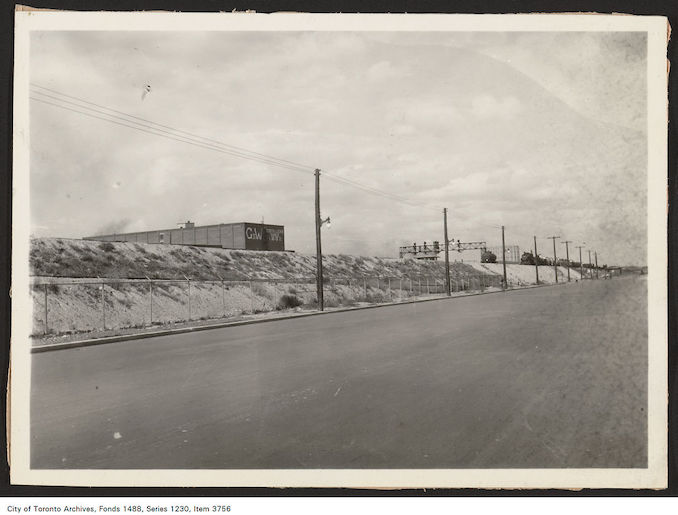
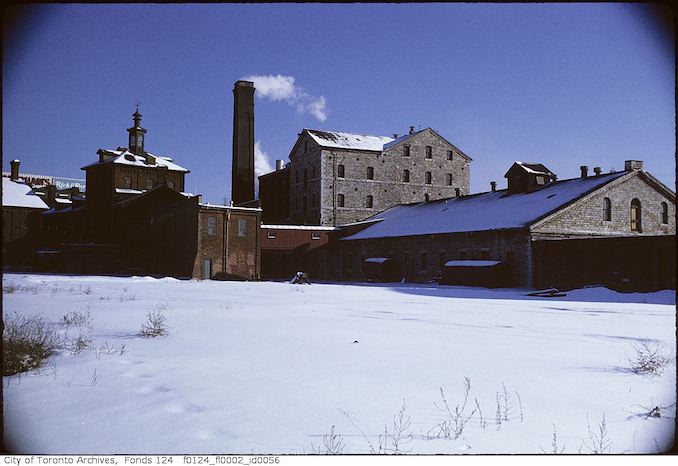
James Worts immigrated from England to Canada in 1831 and, with his brother-in-law William Gooderham, opened a mill for grinding grain. Two years later, during childbirth, Worts’ wife died, and he ended his life. Gooderham, however, persevered and stayed with the company, partnering with Worts’ eldest son. Gooderham added a distillery to the mill in 1837, due to the rise in harvesting grain from Upper Canada farms, and thus began to produce whiskey.
By the 1850s, in the midst of the bustling and developing nature of the city, the Gooderham and Worts distillery was flourishing and thriving. In addition to the former distillery and flour mills, the distillery included a wharf, storage facilities, an ice-cream shop, a barrel-making cooperative and a dairy.
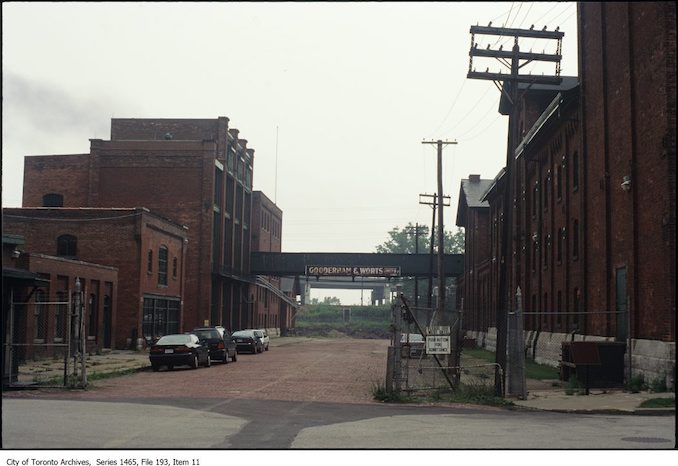
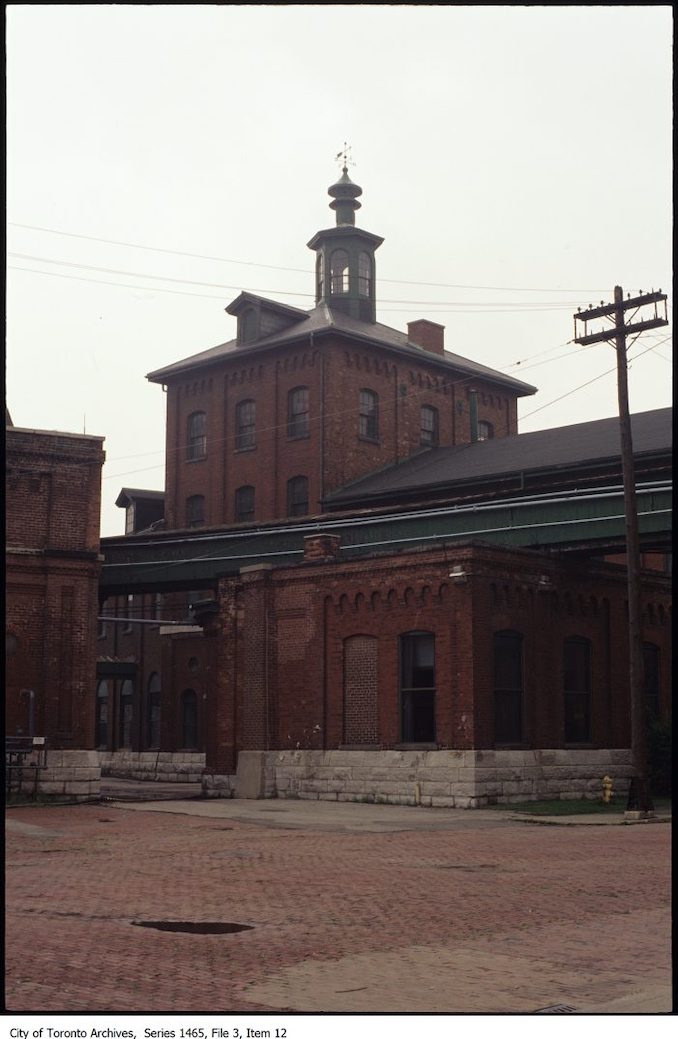
In 1871, Gooderham and Worts became one of the largest exporters in spirit production, shipping millions of gallons of whiskey all across Canada as well as throughout North and South America. At one point it was the largest distillery in the world. After the death of Gooderham and Worts’ son, Gooderham’s son inherited the distillery. Between 1914 and 1920, WWI and Prohibition began to stall spirit production. In 1923, he was forced to sell the withering business to Harry C. Hatch, who partnered with Hiram Walker & Sons Ltd., renaming the business Hiram Walker-Gooderham & Worts Ltd. In 1927 with a pivot towards Canadian Club whiskey production, operations shifted to Windsor, officially concluding the production of rye whiskey at Gooderham & Worts in 1957.
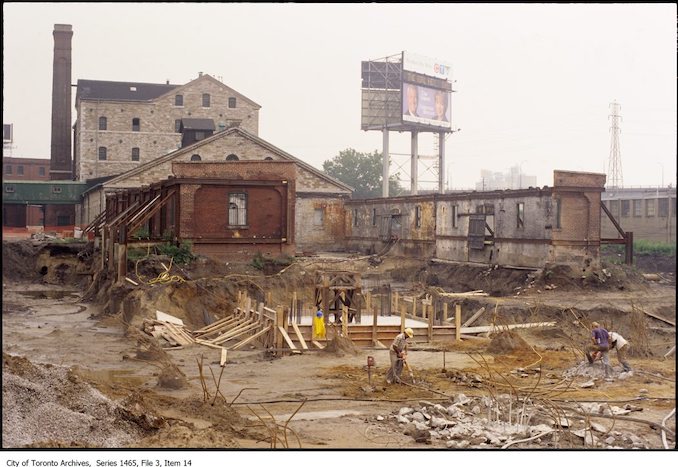
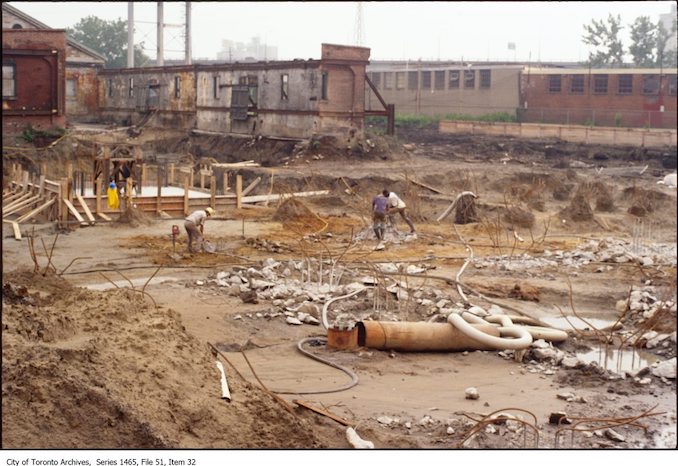
In the 1990s, The Distillery District was revitalized as it became known for something new, film. The intimate region became the number one film hub in Canada and the second outside of Hollywood, over 1700 movies being filmed there. Completing its refashioning, Cityscape Holdings bought the distillery in 2001. They began the project of restoring the district in order to turn it into a pedestrian only neighbourhood that would preserve its heritage, “entirely dedicated to arts, culture and entertainment.” Finally in May 2003 the district reopened and ever since has been one of Canada’s top tourist attractions.

